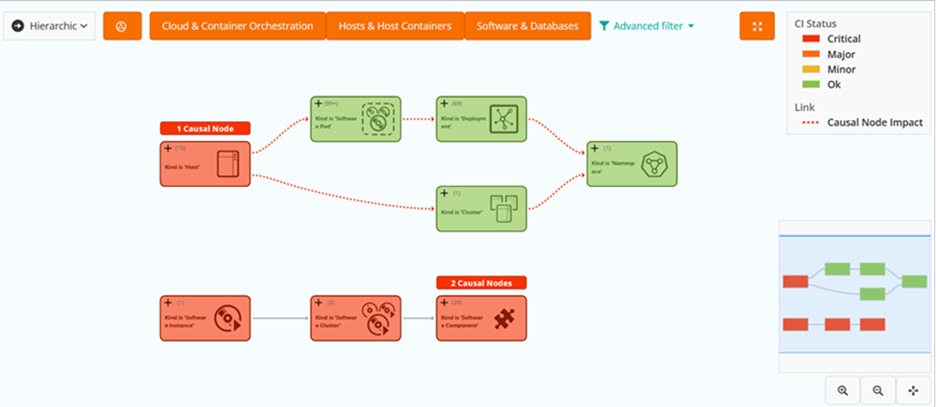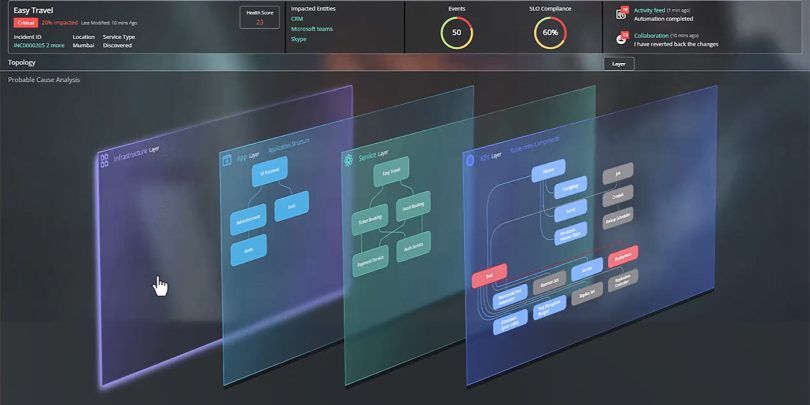Much of the attention on artificial intelligence for IT operations (AIOps) focuses on artificial intelligence and machine learning (AI/ML)—and rightly so. The promise of AIOps is having machines analyze data, identify issues, and act automatically to remediate them in real time—which humans simply can’t do. There are many use cases that AIOps in its current state can address, but what about situations where IT operations (ITOps) or site reliability engineers (SREs) need to intervene? What are we doing to improve that experience?
Information presentation is a critical part of ITOps. The space has evolved quite a lot over the last few years, with single-metric views giving way to consolidated dashboards; overlaying events on metrics; timeline views that correlate metrics, events, changes, and incidents; and service health scoring. One area that has seen less innovation is that of topology visualization, or service modeling.
Business service topology mapping
Traditionally, topologies have been represented in a one-dimensional hierarchy, like this:

Figure 1. A representative one-dimensional topology map.
BMC has always been at the forefront of asset and dependency discovery and mapping. Our industry-leading capabilities are the foundation of our BMC Helix service and operations management solutions.
A new way of looking at topologies
We’ve been thinking about ways we can enhance topology representations for IT operators and SREs. Beyond shapes, colors, and images, there is an opportunity to use three-dimensional models to represent different layers of a technology stack (e.g., containers, database, network, compute, etc.).
And that’s just what we’ve done. We’ve created a “layered topology” view that separates logical groupings of technologies into layers that can be visualized in relationship to each other or abstracted from the full topology view. To do this, you need complete and accurate asset and dependency mapping, which we have with our dynamic service modeling capability.
Here’s a two-minute video demonstrating layered topology in our BMC Helix Operations Management with AIOps solution.
The three-dimensional visualization is simple, intuitive, and easy to navigate. IT operators or SREs can see immediately both the location and depth of the issue. They can bring in only the relevant teams to work on resolution, who in turn have access to important contextual information that is presented clearly, making it easy to investigate.
This is just one of many examples showing how BMC is innovating to realize our vision of ServiceOps and help customers transform their organizations. Click here to learn more about BMC Helix Operations Management with AIOps.
These postings are my own and do not necessarily represent BMC's position, strategies, or opinion.
See an error or have a suggestion? Please let us know by emailing blogs@bmc.com.






